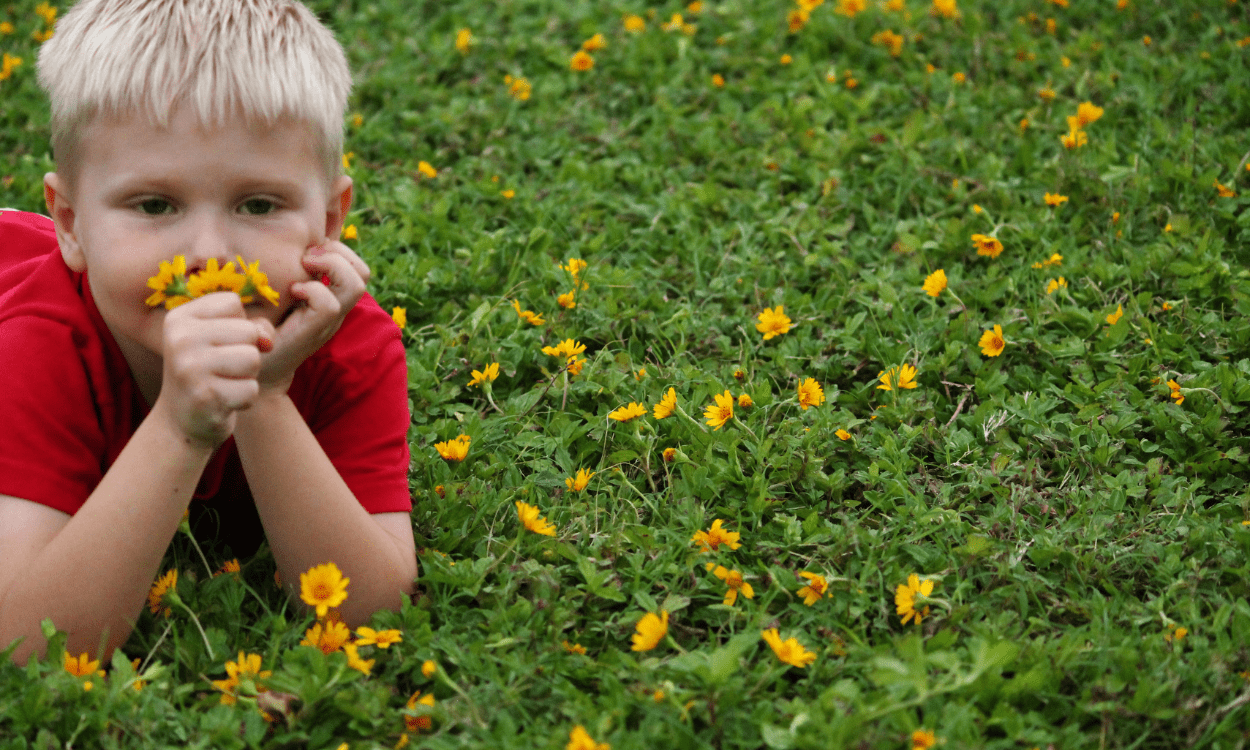The world is full of mysteries for a child. Whether they’re discovering the sweet smell of a summer flower or listening to new music, there are all kinds of ways you can facilitate their learning journey.
In true Montessori fashion, this blog is going to focus on developing your child’s natural curiosity. We won’t just focus on what your child is experiencing — we’re going to talk about how your child experiences things, and how you can help them interpret their experiences. Today, we’ll be discussing Montessori-approved activities that help your child sharpen their senses and improve their ability to interpret sensory information. Let’s get into it!
The Journey of the Sensorial Explorer
To Maria Montessori, the child is a “sensorial explorer.”
From the moment they’re born, they naturally want to start taking stock of their environment. The more they know about their surroundings, the more effectively they can react to them. This process of organizing important sensory information forms the building blocks of your child’s intelligence later on in life.
Sensorial exercises, as Maria Montessori first coined them, are activities for ages 2.5 to 6.5 that cover every quality that the senses can perceive. These activities help the child sharpen their senses and identify things about their environment by systematically exposing the child to a range of stimuli.
The best thing about these exercises is that they naturally include a “control of error,” which means the child receives instant feedback about their progress toward discovering a solution. This allows the child to self-correct if they make a mistake, so they won’t feel discouraged or overwhelmed!
We aren’t going to get into sensorial activities that address every quality here, but rather discuss one sensorial activity that addresses each sense — visual, acoustic, tactile (feel), olfactory (smell), and gustatory (taste).
Something important to think about if you plan on introducing these activities to your own child: always remember to follow your child. Stay attentive to what your child naturally finds interesting and adapt your approach accordingly. If your child really likes certain activities but not others, that’s okay! This is your opportunity to help your child fall in love with learning at an early age, and that begins with recognizing their preferences.
Visual activity – Knobbed cylinder blocks
This activity involves a wooden block with 6 increasingly large holes in it along with 6 pegs that fit in the holes. Your child can develop their fine motor skills by guiding the correct-sized pegs into the right holes. If the child organizes the pegs out of order, they can self-correct and perform the task correctly by themselves!
You can purchase the materials for this activity as a set, but you can also create a DIY solution at home using differently-sized jars with lids and ask your child to fit the right lid to the right jar.
Tactile activity- Touch boards
Touch boards are a great, simple activity that you can either create at home or purchase pre-made. This activity involves touching a surface with many different textures and learning to distinguish between them.
To create one yourself, you could simply glue a number of differently-textured items to a varnished board, such as sandpaper, silk, leather, and wax. You could quiz your child on the textures as they get more familiar with them. (“Can you show me which of these things is rough? Which of these things is the softest?”)
Gustatory (taste) activity – Tasting bottles
This activity requires a series of identical dropper bottles and various liquids for your child to taste. The liquids could be anything you would encourage your child to taste, such as milk, fruit juice, and flavored water. This activity can help your child sharpen their ability to distinguish between tastes. It could also help your child with wrist control and flexibility as they guide the droppers to their mouths and squeeze them!
Olfactory activity – Smelling jars
Collect a series of spices or essential oils for your child to smell and put them in a few identical jars. These could include cinnamon, lavender, oregano, lemon, etc. Feel free to use your imagination. Then, ask your child to open each jar and smell what’s inside. You can explain what each jar contains to help them learn more about household spices and materials. You could even mix up the jars and quiz them on which smell is which!
Acoustic activity – Sound cylinders
This activity involves collecting a series of materials of varying sizes that can fit inside small jars. Your child can shake each jar and hear the sound of the different materials you’ve provided. You could use dried beans, rice, pebbles, sand — use your imagination! This activity helps your child define their sense of auditory sense and memory.
A world of sensory possibility
No matter how you decide to introduce Montessori activities into your home, you’ll be giving your child the tools to expand their mind and meet their potential. If you want to learn more about expanding your child’s Montessori education, consider booking a tour with Inspire Kids Montessori! Our programs are individualized to complement your child’s developmental abilities and we offer a well-balanced curriculum, including math, language, science, culture, and art. Discover the IKM difference for yourself!

